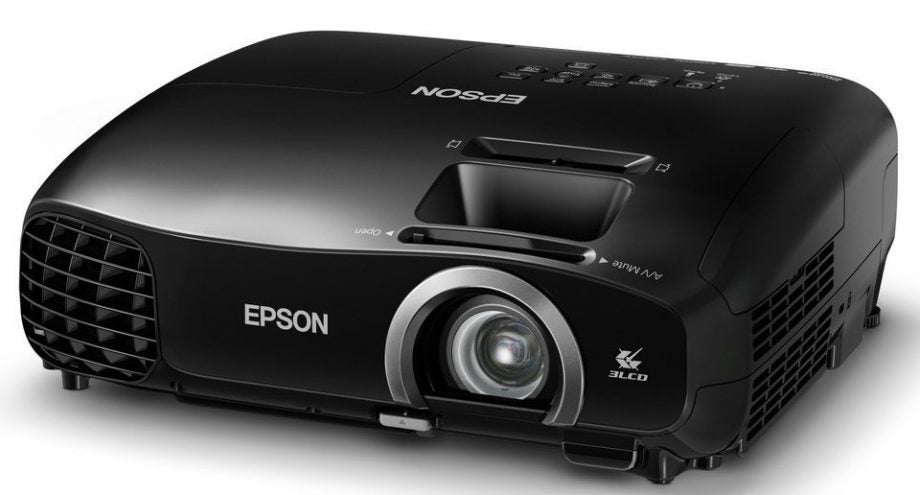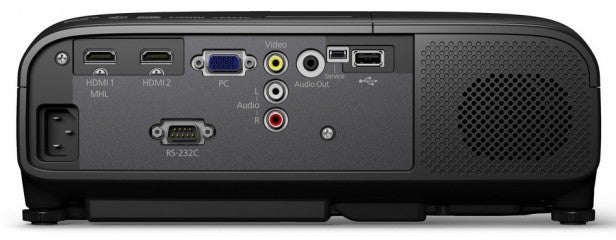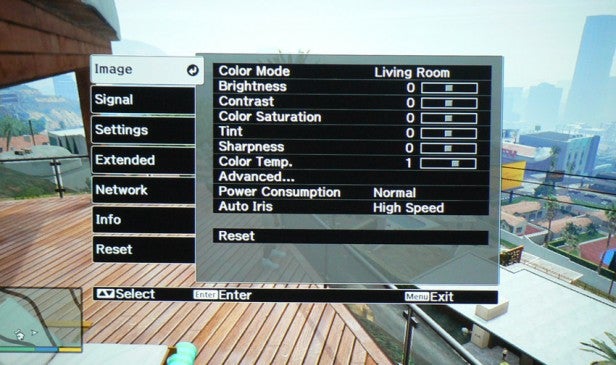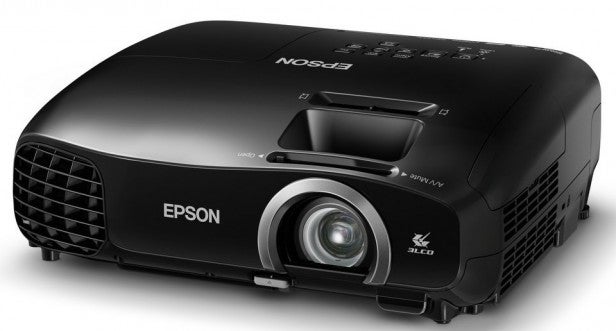Epson EH-TW5200 Review
Epson EH-TW5200
Take GTA to the next level with this gaming projector

Sections
- Page 1 Epson EH-TW5200 Review
- Page 2 Picture Quality Review
- Page 3 3D, Audio and Conclusions Review
Verdict
Pros
- Pictures look mostly great with games
- Nice, compact design
- Decent setup flexibility
Cons
- Lack of black level damages movie performance
- It would be nice if it was slightly cheaper
- Remote isn't backlit
Key Specifications
- Review Price: £749.00
- Full HD LCD projector
- Optimised for gaming
- Active 3D playback
- 2000 Lumens Colour Light Output
- Colour Management System
What is the Epson EH-TW5200?
The Epson TW5200 is a high-brightness, low-cost (£749), 3D-capable LCD projector that Epson is targeting predominantly at gamers, but which can also potentially be used for watching films, screening sports events and so on. One thing is for certain, you can’t buy a TV with a screen anything like the size this Epson can project at the same price – Epson reckons it can project up to 328-inches, impractical as that may be. Let’s see if it delivers where it matters.
SEE ALSO: Best Projectors
Epson EH-TW5200: Design and Features
The Epson TW5200 is a surprisingly compact projector considering it claims a high Colour Light Output of 2000 Lumens. But it makes the most of what little bodywork it’s got with some nicely rounded corners, a glossy finish and a cute slope that runs down from back to front.
The lens is mounted on the right hand side as you look at the projector, with a slightly noisy heat vent sitting on the opposite front corner.
Connectivity is perfectly respectable for a projector that costs just £749, including two v1.4 HDMIs, a composite video input, a D-Sub PC port, an RS232 control port, a USB port, and stereo audio inputs and outputs.
One of the HDMIs is able to parse the MHL protocol so you can reproduce in high resolution the display of compatible mobile phones on the projector. The stereo audio inputs, meanwhile, indicate the presence of a built in audio system so you don’t have to pair the projector with a separate sound system. We’d strongly advise that you do try to use an external audio system if you can, though, for reasons we’ll discuss later.
If you’re wondering why we said the Epson TW5200 enjoys a high Colour Light Output rather than just saying a high brightness, the answer is that Epson measures the brightness of its colours rather than just measuring the brightness of white, like rival manufacturers do.

This should give a more accurate sense of the true brightness potential of the projector – as well as, of course, helping Epson’s marketing department promote LCD’s advantages where colour brightness is concerned over rival projection technologies.
Also standing out on the TW5200’s spec list is a respectable 15,000:1 claimed contrast ratio; a full HD LCD panel; active shutter full HD 3D playback (though you don’t get any free glasses); 10-bit video processing; and surprisingly for such a cheap projector, a 480Hz drive for 3D viewing that experience suggests should help the projector dodge active 3D’s dreaded crosstalk ghosting noise problem.
Exploring the projector’s onscreen menus uncovers a respectable feature count for a £750 projector. There’s a useful series of picture presets for starters, along with separate colour saturation and temperature ‘sliders’; Eco and Normal lamp outputs; Off, Normal and High Speed settings for the Auto Iris system that adjusts light output in response to image content; offset and gain adjustments for the red, green and blue colour elements; and hue, saturation and brightness adjustments for the red, green, blue, cyan, magenta and yellow colour elements.
The final features of interest are a noise reduction system (not available in 3D mode), and Fine and Fast image processing modes that optimise image quality and response time respectively.
Epson EH-TW5200: Set up
Setting the Epson TW5200 up provides you with a couple of slightly painful – if entirely predictable – reminders of the projector’s affordable price point. For a start there’s no vertical image shifting, meaning that you’ll have to rely on the picture-distorting effects of a digital keystone correction system to get the sides of your images straight.
The only good news here is that an unusual but effective sliding knob adjustment above the lens makes keystone correction impressively straightforward. 
The amount of optical zoom provided by the Epson TW5200 is also very limited at just 1.2x. This doesn’t give you much flexibility over where you position the projector in relation to your screen, so we suggest you check if the projector will fit your requirements by having a look at the projection distance/screen size table on p16 of Epson’s manual for the projector, which you can download here.
With no vertical image shifting to help you get the picture to the right height for your screen, it’s good to see that Epson has provided reasonably flexible legs on the TW5200’s rear and front to help you angle the image up and down.
When it comes to getting the most out of the TW5200’s picture engine, there are a few basic rules we’d suggest you follow. First, if you’re watching in a normal living room environment, use the cunningly-named Living Room picture preset, as this delivers brightness and colour levels specially designed to counter a degree of ambient light. For dark room viewing, though, you should use the Cinema preset as your starting point.
Make sure for a lights-down movie session, too, that the Power Consumption setting is on ECO (as this reduces the projector’s running noise and boosts black level response), and that noise reduction is turned off. If you’re watching a film, leave the Image Processing option set to Fine, but if you’re gaming set it to Fast.


